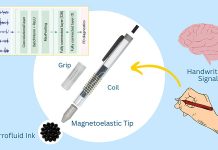
In a new study, researchers found that certain regions in the retina—the lining found in the back of the eye—are more affected by Alzheimer’s disease than other areas.
The findings may help doctors predict changes in the brain as well as cognitive deterioration, even for patients experiencing the earliest signs of mild impairment.
The research was conducted by a team at the Cedars-Sinai Department of Neurosurgery.
Alzheimer’s disease is the most common form of dementia, a group of brain disorders characterized by a general loss of mental abilities, including memory, judgment, language, and abstract thinking.
The findings of the new study were from a clinical trial involving people older than 40 who were showing signs of cognitive decline.
In the study, the team used a noninvasive technique known as sectoral retinal amyloid imaging to capture retinal images in participants.
The retina, which is directly connected to the brain, is the only central nervous system tissue accessible for patient-friendly, high-resolution, and noninvasive imaging.
The images were then analyzed using a new process that could identify certain peripheral regions in the retina that corresponded better to brain damage and cognitive status.
In studying the images, scientists could detect patients with an increased buildup of retinal amyloid protein, signifying a higher likelihood of developing Alzheimer’s disease or cognitive impairments.
These findings build upon pioneering research in 2010 in which the team identified a pathological hallmark of Alzheimer’s disease, amyloid beta-protein deposits, in retinal tissues from deceased patients.
The team then developed a methodology to detect retinal amyloid beta-protein plaques in living patients suffering from the disease.
In another research study, this one involving laboratory mice, the team further validated the role of the retina in displaying hallmark signs of Alzheimer’s disease and identified a potential treatment to combat the disease.
They also suggested a particular type of immune-modulation therapy that may combat the disease by reducing toxic proteins and harmful inflammation in the brain and, in return, enhancing a protective type of immune response that preserved the connections between neurons, which are tightly connected to cognition.
Both studies show promise for diagnosing and treating Alzheimer’s disease, a condition affecting more than 5.5 million people in the U.S.
One author of the study is Maya Koronyo-Hamaoui, Ph.D., an associate professor of Neurosurgery and Biomedical Sciences.
The study is published in Alzheimer’s & Dementia: Diagnosis, Assessment & Disease Monitoring.
Copyright © 2020 Knowridge Science Report. All rights reserved.



